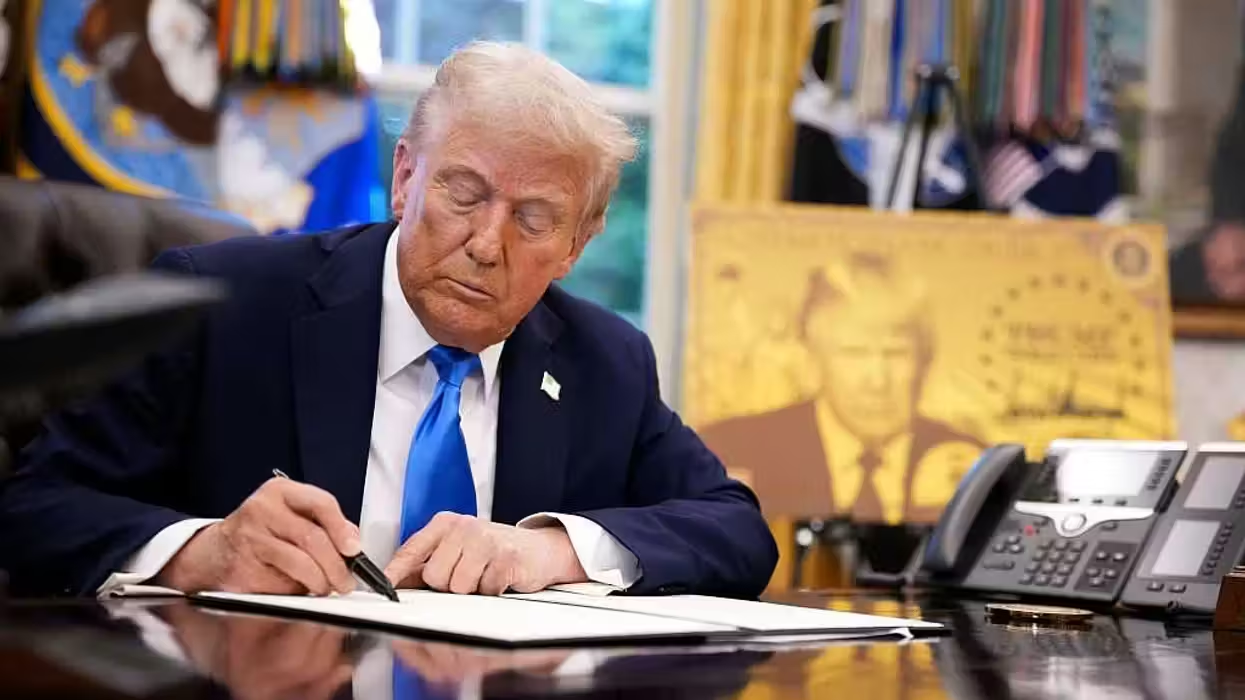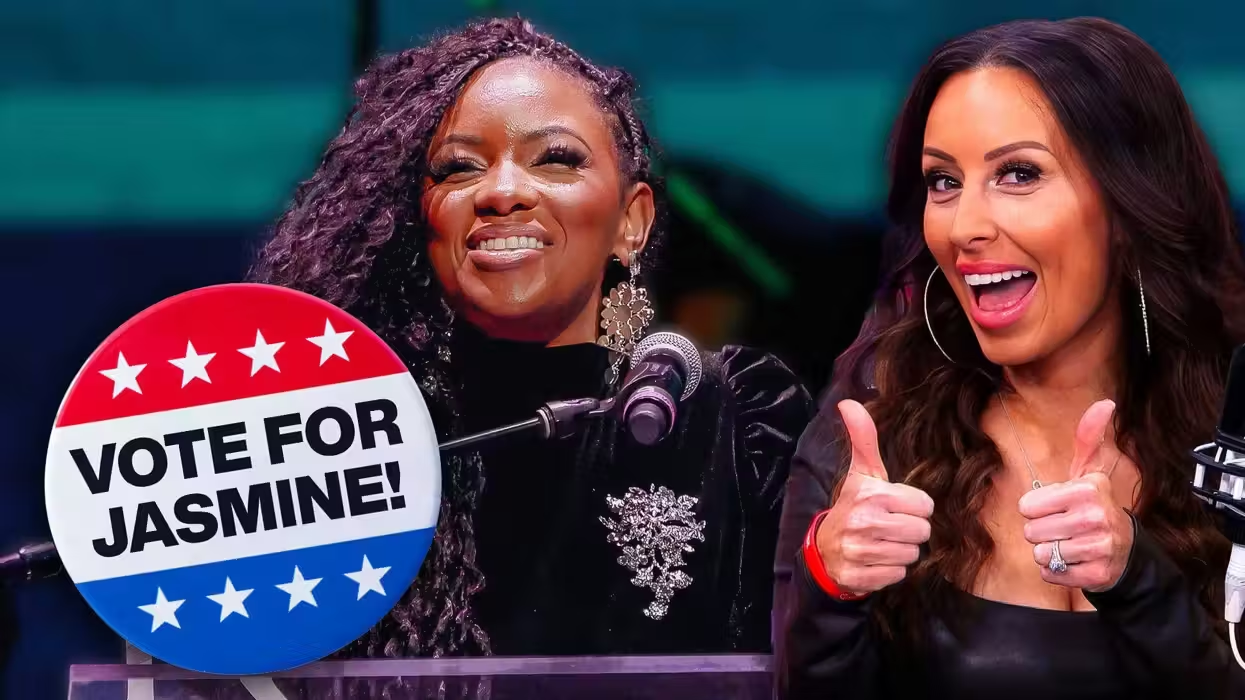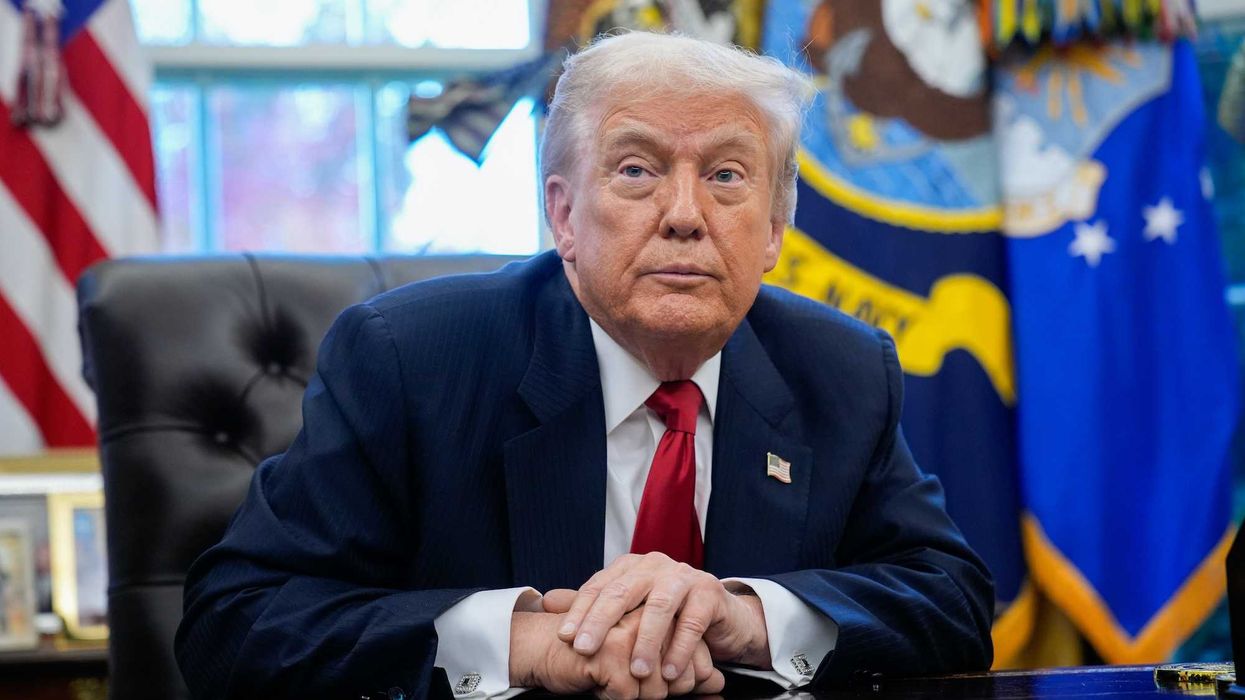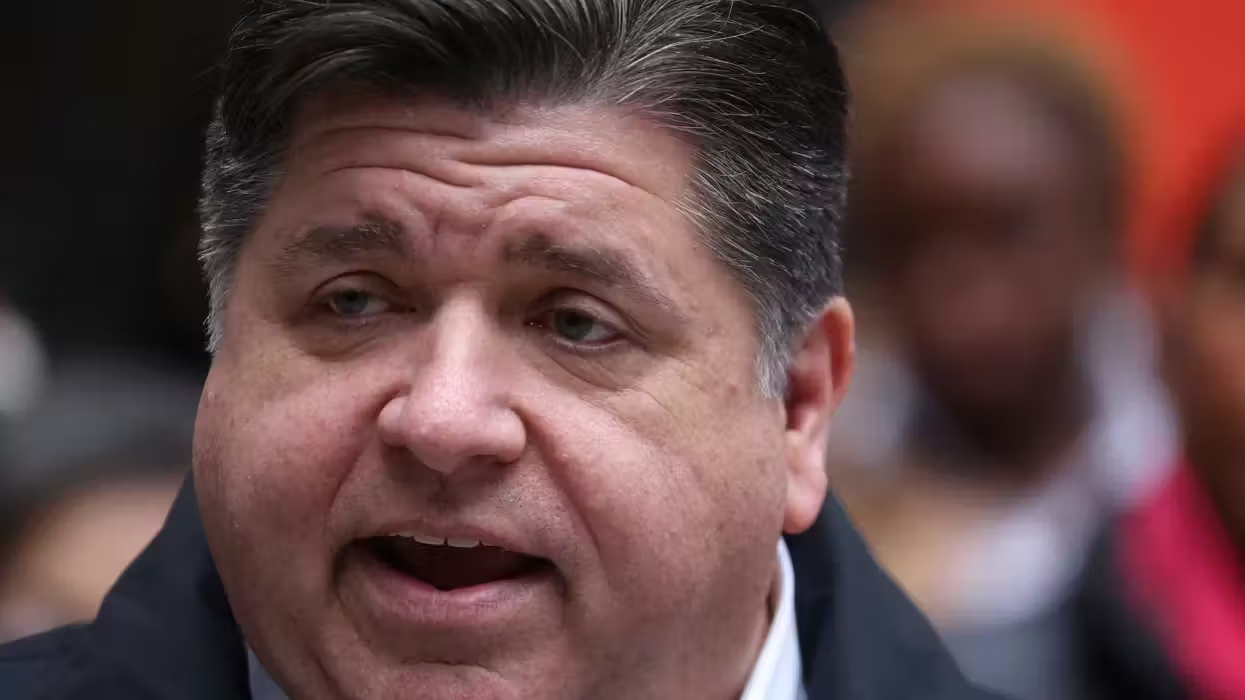
© 2025 Blaze Media LLC. All rights reserved.
It's the Federal Reserve’s 100th Birthday: Here Are 5 Ways It Has Expanded Its Influence Over a Century
December 23, 2013
One hundred years of influence.
The United States House of Representatives on Sept. 18, 1913, voted 287-85 to pass a bill creating the United States Federal Reserve.
The bill, titled “The Federal Reserve Act,” eventually worked its way to the U.S. Senate where it passed on Dec. 18, 1913, by a vote of 54-34.
The measure finally made its way to the desk of President Woodrow Wilson where he signed it into law on Dec. 23, 1913.
That was 100 years ago today.
At the time of the bill’s passage, few could have predicted that the Fed would go on to be one of the most powerful – if not the most powerful – institutions in the world, affecting everything from loan rates to job growth to stock prices.
"If Woodrow Wilson and the other architects of the Federal Reserve could have known how powerful it would become, they would have been shocked," Sung Won Sohn, an economics professor at California State University Channel Islands, told the Associated Press. "There is no part of the global economy today which is not affected by actions of the Federal Reserve."
The Fed, which was created in response to turn-of-the-century banking crises, has expanded its role over the past five years as the world continues to react to the 2008 financial meltdown.
"If you are a central banker with the power to print money and the willingness to use that power, it gets the attention of financial markets," Fed historian David Jones told the AP. "The Fed has grown into this colossus which is basically a fourth branch of government."
These are top five ways the Fed has expanded its influence over the past century, according to the Associated Press:
5. Discount Window
 Outgoing Federal Reserve Board Chairman Ben Bernanke (Image source: Getty Images)
Outgoing Federal Reserve Board Chairman Ben Bernanke (Image source: Getty Images)
When the Fed was created, the "discount window" was its main tool. When commercial banks in the Fed system fell short of money, they could borrow from one of 12 regional Fed banks. This became a vital Fed role: Lender of last resort.The discount window gained vast significance during the financial crisis. Hundreds of banks, including some of the biggest, borrowed from it. The Fed supplied trillions in loans -- to U.S. banks and foreign banks with U.S. subsidiaries.
That effort, along with a rescue fund approved by Congress, helped save the financial system. But the 2010 Dodd-Frank financial overhaul law restricted the Fed's ability to give emergency aid to non-banks like insurance giant American International Group, which got billions. The Fed would now need the Treasury secretary's approval. And the support couldn't be directed to a single company.
4. Short-Term Rate
 The U.S. Fed Reserve (image source: Getty Images)
The U.S. Fed Reserve (image source: Getty Images)
This is the Fed's main lever to influence the economy. It was discovered almost by accident about a decade after the Fed's creation. The Fed found it could influence short-term rates by buying and selling Treasurys that banks hold as reserves. The Fed was slow to exploit this power during the Depression, when it could have delivered a desperately needed economic jolt.The Fed uses short-term rates to meet its dual mandate: Maximizing employment and stabilizing prices.
To lower rates, it creates money and uses it to buy bonds from banks. The banks can use the reserves to make loans. To raise rates, the Fed does the reverse: It sells Treasurys to banks and takes money out of circulation. Rates rise.
The Fed last week strengthened its commitment to low short-term rates. It said it would likely keep its benchmark rate at a record low near zero "well past" the time unemployment falls below 6.5 percent from the current 7 percent.
3. Bond Purchases
 Getty Images.
Getty Images.
Since the Fed can't lower its short-term rate below zero, it's taken other steps to spur growth. Starting in 2009, it's been buying Treasurys and mortgage bonds in a program never tried before on such a scale.The idea is to lower long-term loan rates to stimulate borrowing and spending. The Fed's bond buying has swollen its investment portfolio to a record $4 trillion. The purchases have helped keep long-term rates low. But they've incited critics who fear the Fed is inflating bubbles in assets from stocks to farmland.
Last week, the Fed said it will slow its monthly purchases from $85 billion a month to $75 billion.
2. Greater Openness
 Getty Images.
Getty Images.
The Fed has tried to assure investors that short-term rates will stay low even after unemployment falls further. This assurance is part of its effort to be more publicly transparent. The Fed had long guarded its operations closely. Until the 1990s, it didn't even announce when it changed short-term rates.Starting with Bernanke's predecessor, Alan Greenspan, the Fed became more open. It began releasing statements after each meeting to explain what it had done and why.
Bernanke went much further. He updated economic forecasts more frequently. He became the first chairman to hold quarterly news conferences. He sat for TV interviews and held town-hall meetings. Some critics felt the Fed limited its flexibility by speaking too explicitly about its plans.
But according to U.S. lawmakers, most notably Sen. Rand Paul (R-Ky.), the Fed’s recent steps to appear transparent are hardly satisfactory. In fact, Paul has threatened to scuttle the nomination of proposed Fed chairwoman Janet Yellen unless the Senate agree to an audit of the Federal Reserve.
1. Political Independence
 President Barack Obama has nominated Janet Yellen to head the Federal Reserve after the exit of Fed Chair Ben Bernanke (Image source: Getty Images)
President Barack Obama has nominated Janet Yellen to head the Federal Reserve after the exit of Fed Chair Ben Bernanke (Image source: Getty Images)
Congress has sought to insulate the Fed from political meddling to preserve its independence. Yet the Fed has become a target for critics because of the unorthodox steps it's taken over the past five years. Some Republicans think it isn't accountable enough.House Financial Services Committee Chairman Jeb Hensarling, R-Texas, plans to review whether changes should be made to the Fed's operations - especially, Hensarling argues, because "the Fed has either implicitly or explicitly assumed so many mandates and has, historically, been subject to little or no congressional oversight."
The Associated Press contributed to this report.
--
Follow Becket Adams (@BecketAdams) on Twitter
[related]
Want to leave a tip?
We answer to you. Help keep our content free of advertisers and big tech censorship by leaving a tip today.
Want to join the conversation?
Already a subscriber?
more stories
Sign up for the Blaze newsletter
By signing up, you agree to our Privacy Policy and Terms of Use, and agree to receive content that may sometimes include advertisements. You may opt out at any time.
Related Content
© 2025 Blaze Media LLC. All rights reserved.
Get the stories that matter most delivered directly to your inbox.
By signing up, you agree to our Privacy Policy and Terms of Use, and agree to receive content that may sometimes include advertisements. You may opt out at any time.






